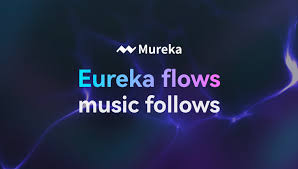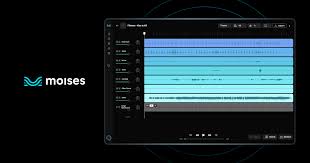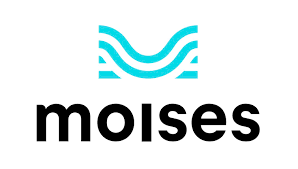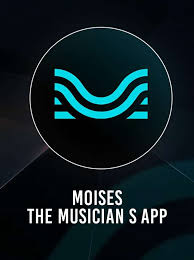Introduction: Understanding Moises and Its Monetization Strategy
Moises has become a go-to AI-powered music app for vocal removal, stem separation, tempo control, and intelligent chord detection. Its intuitive interface and real-time processing capabilities have made it popular among musicians, producers, teachers, and casual music lovers alike.
But one question often arises among users and industry watchers: How does Moises make money?
This article takes a deep dive into the real business model of Moises, breaking down its multiple income streams, how its freemium approach works, and how it's positioning itself in the fast-growing AI music software market.

1. Subscription-Based Revenue: Freemium to Premium
The cornerstone of Moises’s monetization strategy is its freemium subscription model. This means users can access limited features for free, but must upgrade to Premium or Pro to unlock the app’s full power.
Free Plan
5 uploads per month
Songs must be under 5 minutes
Tracks are stored for only 3 days
Limited to 2-stem separation (vocal + instrumental)
Premium Plan
$3.99/month (billed annually) or $7.99/month
Unlimited uploads
Up to 20 minutes per track
4–5 stem separation (vocals, drums, bass, piano, others)
High-quality WAV export
Smart metronome, pitch/key shift, loop, and chord sync
Pro Plan (for content creators or educators)
Starts at $19.99/month
Designed for power users needing commercial licensing, longer retention, and advanced features
The recurring revenue from these monthly or annual subscriptions is Moises’s primary source of income. It's predictable, scalable, and supported by constant feature updates.
2. API Licensing and B2B Integration
Moises isn’t just a standalone app—it also offers its AI audio separation technology as an API to businesses.
That means:
Third-party apps (e.g., DJ apps, karaoke platforms, educational tools) can license Moises’s core technology
Moises charges usage-based fees or enterprise licensing rates
This B2B monetization expands its customer base beyond end-users to include entire platforms that want to leverage AI stem separation without building their own engine.
Example applications include:
Online karaoke services
Music learning platforms
Podcast post-production tools
By selling the “engine under the hood,” Moises ensures a diversified revenue stream that isn’t entirely dependent on individual subscriptions.
3. Educational Licensing for Music Schools and Instructors
Moises also targets the academic and music education market with specialized tools and pricing models.
Music teachers and institutions can purchase Moises for Education, which includes:
Multi-seat licensing for classrooms
Teacher-student management tools
Collaborative playback environments
Shared audio libraries and assignments
This B2E (business-to-education) model helps Moises tap into a stable, high-volume customer base. With remote learning and digital classrooms on the rise, this revenue stream is expected to grow.
4. Strategic Partnerships and In-App Revenue
Being available on both App Store and Google Play, Moises benefits from:
In-app purchases and upsells
Feature-based upgrades (e.g., purchase more upload time or higher audio quality)
Visibility through partner promotions or Apple/Google highlights
Although smaller than subscriptions or licensing, this is a healthy mobile ecosystem revenue stream that drives daily monetization.
5. Community Engagement and Retention Tactics
Moises also profits by optimizing user lifetime value (LTV) through:
Feature-rich onboarding for free users
Notifications that encourage stem separation or practice features
Limited-time Premium trials and upgrade offers
In-app tutorials to educate users about paid tools
This maximizes conversion rates from free to paid users, a critical metric for SaaS businesses.
6. Indirect Revenue: Data Insights and AI Training (Without Selling Data)
Moises benefits from anonymized, aggregated data to improve its algorithms and product development. It does not sell user data, but this internal feedback loop enhances product quality, which in turn:
Improves customer retention
Increases upgrade rates
Fuels word-of-mouth growth
This kind of data-driven development isn’t revenue in a direct sense, but it plays a major role in long-term monetization.
Conclusion: A Smartly Diversified AI Music Business Model
So, how does Moises make money? It’s not just one thing—it’s a smart combination of:
Freemium user upgrades to Premium and Pro
Licensing deals through API integrations
Institutional sales to educators and music schools
Mobile in-app purchases and subscription upsells
Platform scalability driven by smart AI development
This diversified approach allows Moises to sustain a large user base while monetizing its cutting-edge AI in multiple ways. In an increasingly crowded market of AI music tools, Moises has positioned itself as both a product and a platform.
FAQs: How Does Moises Make Money?
Q: Is the free version of Moises truly free?
Yes, but it comes with monthly limits on uploads, track length, and export quality. Premium features are behind a paywall.
Q: Can I use Moises commercially without paying?
No. Commercial use (e.g., YouTube videos, music production) requires a Pro license.
Q: Is Moises profitable?
As of 2025, Moises hasn’t disclosed profits publicly, but its multiple revenue streams suggest a scalable and healthy business model.
Q: Does Moises sell user data?
No. Moises states clearly that it does not sell or share personal user data.
Q: Can I cancel my Moises subscription anytime?
Yes. You can cancel any time via the app store or directly through your account settings.
Learn more about AI MUSIC







